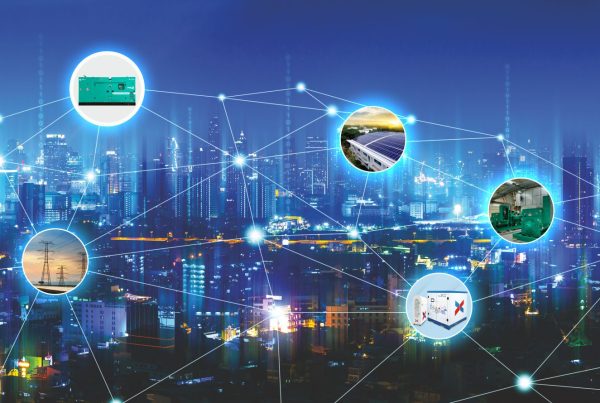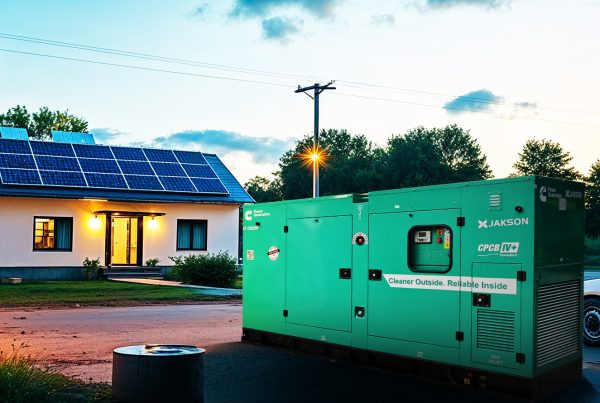The Power Industry is yet to embark on a major innovation journey in delivery of services. For more than a century, the Industry has been working on the traditional model i.e. producing power through central plant and delivering power through long distance transmission system. This has been the phenomenon for all types of major clients including domestic, commercial and industrial consumers. However, the scenario has been changing, as customers now have rather become passive recipients. Thus, the market is demanding transformation in the power sector. Now, customers have more choices as electric supply diversifies. New opportunities and adoption of renewable energy allow them to secure energy from cleaner sources i.e. in a way that better suits their needs— and saves them money. By bringing power production on site, businesses access economic, environmental and reliability benefits unavailable to them under the old electricity business model. To ascertain the market needs, one of the innovative models is ‘Energy as a Service’.
Energy as a service is a digitized, sustainable energy platform, wherein highly synchronized smart assets are communicating and interconnected with each other to provide service. In this platform, a digital layer coordinates and distributes both energy and information in real-time, enabling myriad interactive products and services to be traded.
Increased focus on renewable energy coupled with increased deployment of distributed energy resources has been the trend thereby shifting more focus towards smart devices. These coupled and bundled solutions have created room for innovative business models to emerge, shifting the value from traditional supply to value added service. The increased focus on digitalisation, smart metering and IOT has enabled to gather required data and analysis of large datasets that in turn enable automation. All of this provides the basis for the development of new energy-related services.
Energy is an integral part of many sectors, including electricity generation, transportation, and for various needs in residential and commercial buildings. Today our dependence on fossil fuel based energy is much more which emits high level of polluting gases. It has been critical to promote low and zero carbon technologies and thereby adopting renewable energy.
With the increased focus on renewables, the EaaS has become an innovative model to capture the value associated with energy efficiency improvements. Here the consumers can upgrade their existing infrastructure with more energy efficient technologies, thus helping them to save cost. It has been observed that market often fails to adopt such new technologies, which prevents them from acting in their own self-interest.
The main aspects to promote ‘Energy as a Service’ are explained below:
Distributed Generation and Micro Generation
There are variety of renewable sources of energy available such as solar, wind, hydro, biomass, waste-to-energy, fuel cells and geothermal. These renewable energy sources can be smaller, modular and more flexible than traditional large-scale centralised generation. Through integration with different sources of energy including storage, these can be termed as micro grid. These can also be connected through low-voltage section of the grid through local distribution networks.
UTILITY SCALE STORAGE
Developments in the market for stationary storage will be a game-changer for development of the grid. With the increasing use of renewable energy there is much greater load variability and potential for grid instability. Large-scale storage offsets this, through load levelling, frequency regulation and renewables integration. It is also used for voltage support and price arbitrage. And it is often more cost-effective to support substations than build new ones.
Digitalisation in Power Sector
It has become an essential element related data into value for the power system. Electricity providers can assume a new role as an energy service provider (ESP), monetising the value created by the digitalisation of the power sector. This new role of energy providers has led to the development of innovative and customer centric business models by both conventional companies from the energy sector and new actors entering the sector, such as information technology (IT) companies. ESPs are evaluating options not only to offer services that reduce the electricity bills for consumers, but also to provide them with more sustainable solutions for power supply. Some consumers may be willing to switch to self-consumption solutions and install distributed renewable generation technologies, such as solar rooftop photovoltaic (PV), possibly coupled with battery storage.
CONTRIBUTION TO POWER SECTOR TRANSFORMATION
•Increased Deployment and Better Management of Distributed Energy Resources
Energy asset installation services offered by ESPs facilitate the deployment of distributed energy resources, providing the necessary support to customers that wish to install renewable energy and energy storage systems. Also, a range of innovative energy services is emerging for consumers that cannot or do not want to install distributed energy resources in their residences.
Energy management service is also incentivising consumers to install distributed energy resources and, through demand response, to save on their electricity bills.
•Increased Flexibility through Demand Side Management
Energy management models under the EaaS business model support demand-side management, thereby unlocking demand-side flexibility in the power system. ESPs can implement intelligent systems using real-time data gathered via smart meters to predict peak demand levels over the next few hours for a given facility, and set rules to trigger load shedding to optimise consumption during peak demand periods.
ESPs can also enable non-automated demand management measures. For instance, retail energy suppliers can use devices that can help customers monitor the energy consumed by every appliance and provide guidance to customers on managing their consumption to reduce their electricity bills.
Conclusion
The effective utilization and success of this model shall depend upon the development of the following areas:
Digitalization : Most EaaS business models are based on analysing real-time information and data on consumers’ energy usage as well as electricity market conditions. To gather real-time information, the deployment of enabling infrastructure such as communication infrastructure, advanced metering infrastructure and smart devices is necessary. Electricity appliances and devices equipped with appropriate sensors and hardware need to be deployed at the consumer end. Such devices can capture and transmit their consumption information and, possibly, allow for remote control or automated responses to electricity price signals. Standardised communication protocols for such appliances need to be developed.
Implementation of Time-of-use Tariffs: Time-of-use tariffs are a key enabler for EaaS business models. EaaS providers can deploy a combination of assets such as solar PV, battery storage, smart devices and smart meters to optimise energy consumption as well as provide demand response services to system operators. During peak load hours, when tariffs are high, ESPs can reduce demand, either by increasing self-consumption from local generation sources or using distributed storage systems.
Revision of Distribution System Operation Methodologies to account for Demand-Side Flexibility: Distribution system operators have conventionally invested in network reinforcement to reduce distribution network congestion that could occur during peak demand intervals. Thus, the rules under which distribution system operators plan and size their grids could be modified to allow these operators some freedom to decide whether to reinforce the grid or to use flexibility services provided by end customers via ESPs. Similarly, meeting peak load demand through locally stored or generated energy instead of transporting generation from a distant source may decrease grid congestion and defer network investments.









